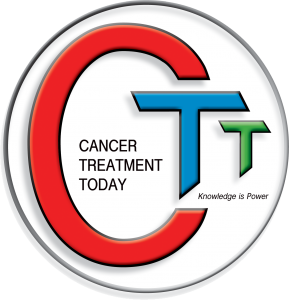Allogeneic stem cell transplantation for relapsed AML after remission – pro
Allogeneic bone marrow transplantation results in the lowest incidence of leukemic relapse, even when compared with bone marrow transplantation from an identical twin (syngeneic bone marrow transplantation). This has led to the concept of an immunologic graft-versus-leukemia effect, similar to (and related to) graft-versus-host disease. The improvement in freedom from relapse using allogeneic bone marrow transplantation as the primary postremission therapy is offset, at least in part, by the increased morbidity and mortality caused by graft-versus-host disease, veno-occlusive disease of the liver, and interstitial pneumonitis. Disease-free survival rates using allogeneic transplantation in first complete remission have ranged from 45% to 60%. The use of allogeneic bone marrow transplantation as primary postremission therapy is limited by the need for a human leukocyte antigen (HLA)-matched sibling donor and the increased mortality from allogeneic bone marrow transplantation of patients who are older than 50 years. The mortality from allogeneic bone marrow transplantation that uses an HLA-matched sibling donor ranges from 20% to 40%, depending on the series. The use of matched, unrelated donors for allogeneic bone marrow transplantation is being evaluated at many centers but has a very substantial rate of treatment-related mortality, with disease-free survival rates less than 35%. It is usually assumed that allogeneic transplantation after relapse performs similarly.
Vikas et al reviewed the outcoems when allogeneci stemc ell transplantation is performed in second line. He says: “There are no prospective studies in which the authors evaluate the outcome of HCT in comparison to conventional chemotherapy in patients with relapsed AML. All reported data are retrospective in nature and have the limitations of treatment heterogeneity and selection bias. However, a prospective study in this area is logistically difficult and unlikely to be performed. HCT is often used in this setting, despite only limited evidence about its outcome.
One study from Europe evaluated the outcomes of 667 AML patients in first relapse among 1540 newly diagnosed non-M3 AML patients (age 15-60 years) entered into 3 consecutive cooperative group trials. The authors identified 4 prognostic factors in multivariate analysis: relapse-free interval from CR1, cytogenetics at diagnosis, age at first relapse, and autologous or HCT before first relapse. On the basis of these factors, a weighted prognostic score was proposed to identify 3 risk groups: favorable, intermediate, and poor risk. For patients able to achieve CR2, comparison of chemotherapy versus HCT among these 3 groups showed superior 5-year survival in patients undergoing HCT (favorable, 88% vs 33%; intermediate, 48% vs 31%; poor, 26% vs 6%). Achievement of CR2 and application of salvage HCT are crucial for improving the prognosis of these patients.60,61 Survival of patients in first relapse undergoing salvage HCT was significantly better for those who achieved CR2 compared with those not in remission at HCT (3-year survival 59% vs 21%). Few data on comparison of UCB-HCT/ haplo-HCT versus chemotherapy in this setting are reported. Given the poor prognosis associated with chemotherapy alone, UCB or haplo-HCT for patients in CR2 may be valuable, particularly in light of their rapid availability.”
In regard to MUD allogeneic transplant, a recent guideline says: “In the absence of an HLA-identical family donor, it seems reasonable to offer allogeneic SCT from a matched unrelated donor (MUD) to patients with poor-risk disease, either for biological features or for late achievement of CR. With the use of MUD transplantation, a long-term OS comparable to that obtained with a sibling donor, and far exceeding that observed with autotransplant, has been observed by some authors in this high-risk cohort However, the evidence supporting an advantage with MUD-SCT in high-risk patients without a sibling donor is weak.”
2015 NCCN does not list high dose therapy with stem cell transplantation in its recommendations for relapsed disease (AML=F), but the discussion section alludes to this therapy.
NCCN now recommends an option of a reduced intensity allogeneic stem cell transplant even with residual disease. ESMO is supportive of stem cell transplantation even for selected patients with refractory disease.
If the Stem Cell Transplant is standard of care, is it medically necessary for the treatment of the patient’s diagnosis given their health status?
Are the proposed drugs for ablation standard of Care?
Yes
References:
NCCN, AML-13, 2018
Authors: M.F. Fey, C. Buske Acute Myeloblastic Leukaemia in Adult Patients: ESMO Clinical Practice Guidelines Oncol 2013; 24 (Suppl 6): vi138-vi143
British Committee for Standards in Haematology, Milligan DW, Grimwade D, Cullis JO, Bond L, Swirsky D, Craddock C, Kell J, Homewood J, Campbell K, McGinley S, Wheatley K, Jackson G. Guidelines on the management of acute myeloid leukaemia in adults. Br J Haematol 2006 Nov;135(4):450-74. [181 references]
nccn.org, AML
Hübel K, Weingart O, Naumann F, Bohlius J, Fresen MM, Engert A, Wheatley K.
Allogeneic stem cell transplant in adult patients with acute myelogenous leukemia: a systematic analysis of international guidelines and recommendations.Leuk Lymphoma. 2011 Mar;52(3):444-57.
Ljungman P, Urbano-Ispizua A, Cavazzana-Calvo M, Demirer T, Dini G, Einsele H, et al. Allogeneic Transplantation: definitions and current practice in Europe (EBMT Special Report). Bone Marrow Transplant 2006;37:439-49
Enrica Morra, Giovanni Barosi, Alberto Bosi, Felicetto Ferrara, Franco Locatelli, Monia Marchetti, Giovanni Martinelli, Cristina Mecucci, Marco Vignetti, and Sante Tura Clinical management of primary non-acute promyelocytic leukemia acute myeloid leukemia: practice Guidelines by the Italian Society of Hematology, the Italian Society of Experimental Hematology and the Italian Group for Bone Marrow Transplantation
Haematologica 2009 94: 102-112
Vikas Gupta et al, Allogeneic hematopoietic cell transplantation for adults with acute myeloid leukemia: myths, controversies, and unknowns. February 24, 2011; Blood: 117 (8)
